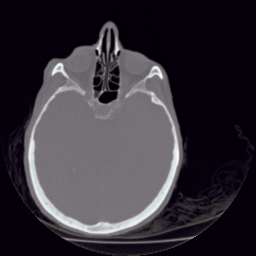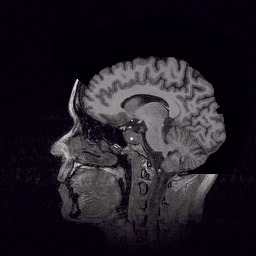|
|
The Stanford volume data archive |
This archive contains several volume datasets that are frequently used as test data in papers appearing in the computer graphics, scientific visualization, and volume rendering literatures.
These first two datasets are copies of a subset of the datasets in the "University of North Carolina Volume Rendering Test Data Set" archive. As of November 2000, that archive is still online at ftp.cs.unc.edu in the directory /pub/projects/image/CHVRTD/volII. These datasets were originally created in 1987-89 by Marc Levoy. They were assembled into an archive by Graham Gash (gash@cs.unc.edu) of the University of North Carolina. The files in the archive you are currently looking at were reformatted by Bill Lorensen of General Electric to make them more convenient to read. These datasets are in the public domain. Neither the University of North Carolina nor Stanford University objects to your further distributing these files, but we request that full acknowledgement of the source of the data ("University of North Carolina") accompany such distribution. If you are going to send one of these data sets to someone, please also send the accompanying information file (*.info below) and this (clickable) announcement file.

Contents of CThead.info:
Description: CT study of a cadaver head
Dimensions: 113 slices of 256 x 256 pixels,
voxel grid is rectangular, and
X:Y:Z aspect ratio of each voxel is 1:1:2
Files: 113 binary files, one file per slice
File format: 16-bit integers (Mac byte ordering), file contains no header
Data source: acquired on a General Electric CT Scanner and provided
courtesy of North Carolina Memorial Hospital
Data available (formatted as described above) as a
gzipped tar file (7.3 MB).
Sample volume renderings of this dataset can be found in the paper, Display of Surfaces from Volume Data, IEEE Computer Graphics and Applications, Vol. 8, No. 3, May, 1988, pp. 29-37. Here is one such rendering.

Contents of MRbrain.info:
Description: MR study of head with skull partially removed to reveal brain
Dimensions: 109 slices of 256 x 256 pixels,
voxel grid is rectangular, and
X:Y:Z aspect ratio of each voxel is 1:1:2
Files: 109 binary files, one file per slice
File format: 16-bit integers (Mac byte ordering), file contains no header
Data source: acquired on a Siemens Magnetom and provided courtesy of
Siemens Medical Systems, Inc., Iselin, NJ. Data edited
(skull removed) by Dr. Julian Rosenman, North Carolina
Memorial Hospital
Data available as a
gzipped tar file (7.8 MB).
Click here to see sample renderings of a clipped version of this dataset.
Description: CT scan of the Stanford terra-cotta bunny Dimensions: 360 slices of 512 x 512 pixels voxel grid is rectangular, and X:Y:Z aspect ratio of each voxel is 1:1:1 Files: 360 binary files, one file per slice File format: 16-bit integers (Mac byte ordering), file contains no header Data source: Terry Yoo of the National Library of Medicine, using a scanner provided by Sandy Napel and Geoff Rubin of Stanford Radiology, of the terra-cotta bunny provided by Marc Levoy of Stanford CSClick here for README file with more information about the dataset. This dataset will also be available soon from the National Library of Medicine.
Data available as gzipped tar file (79 MB)
Click here for the more frequently used 3D polygon mesh model of the bunny, obtained using laser scanning.